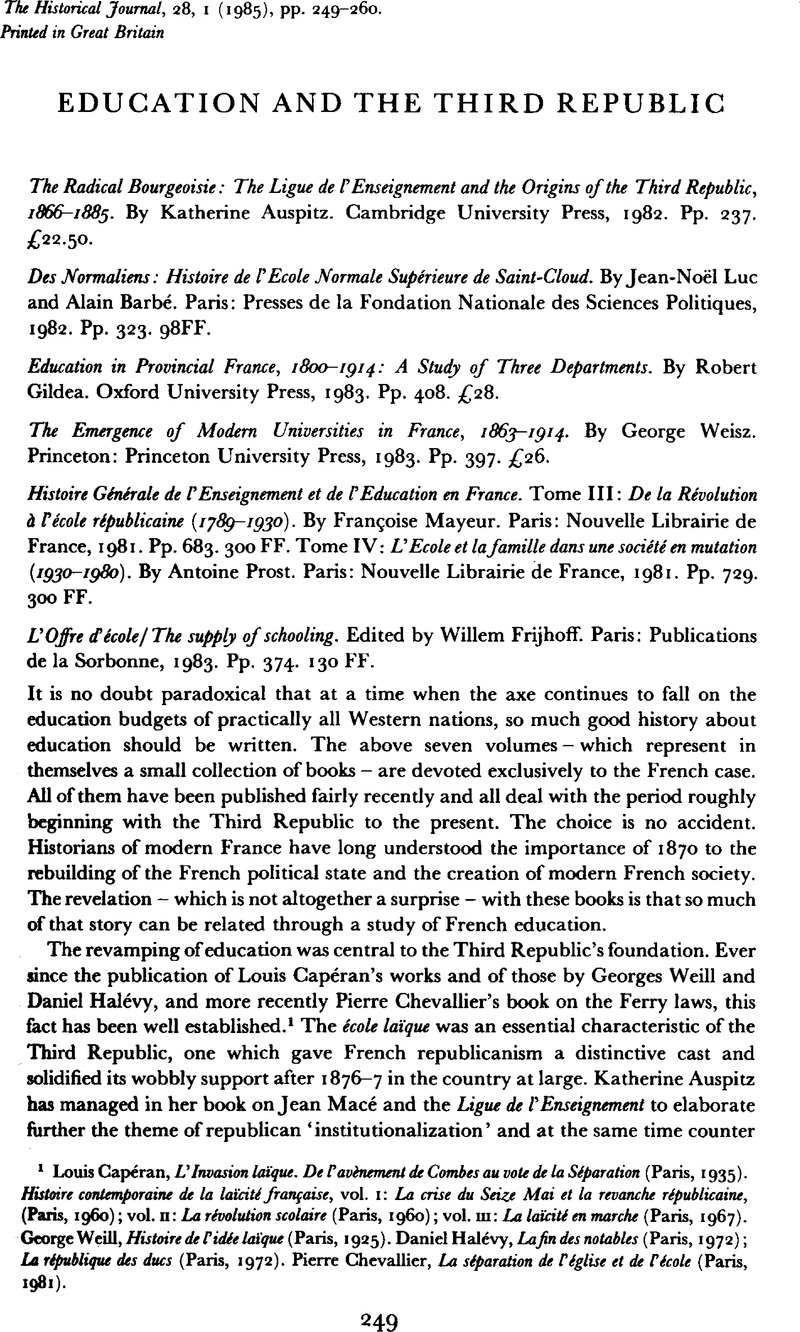No CrossRef data available.
Published online by Cambridge University Press: 11 February 2009

1 Capéran, Louis, L'Invasion laïque. De l' avènemens de Combes au vote de la Séparation (Paris, 1935)Google Scholar. Histoire contemporaine de la laïcité française, Vol. I: La crise du seize Mai et la revanche républicaine, (Paris, 1960)Google Scholar; vol. II: La révolution scolaire (Paris, 1960)Google Scholar; vol III: Laïcité en marche (Paris, 1967)Google Scholar. Weill, George, Histoire de I'idée laïque (Paris, 1925)Google Scholar. Halévy, Daniel, Lafindes nolables (Paris, 1972)Google Scholar; La république des ducs (Paris, 1972)Google Scholar. Chevallier, Pierre, La séparalion de I' église el de I' école (Paris, 1981)Google Scholar.
2 K., Auspitz's principal antagonist would appear to be Elwitt, Sanford J., who is the author of the study The making of the Third Republic: class and politics in France, 1868–1884 (Baton Rouge, 1975)Google Scholar.
3 Auspitz's choice of ‘radical’ to describe that part of the middle-class French society which was anti-clerical and opposed to the regime of Napoleon III is unfortunate because of its connexion to the political party of that name. While a great many of the Ligue's membership were no doubt radicals, not all who adhered to the views she analyses in the first part were such.
4 Gadille, Jacques, La pensée et l'action politique des évêques français au début de la IIIe République, 1870–1883, 2 vols. (Paris, 1967)Google Scholar. Dansette, Adrien, Histoire religieuse de la France contemporaine (Paris, 1965)Google Scholar.
5 Gildea also wrote an article on technical education entitled ‘The agonies of modernisation: some problems of technical education, 1870–1914’, which was published in L'offre d'école/The supply of schooling.
6 The American system was instituted in 1969. However, because of the controversy surrounding the decision, Guichard, who was education minister in 1971, reintroduced the 20-point notation into practice for the classes d'examen.
7 Robert Gildea, Françoise Mayeur and Antoine Prost all presented papers at the conference which were published in this volume.